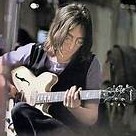
John Lennon's Guitar Solo on "Get Back"
By
Ruben G. Vasquez
Beatles Historian
The4Beatles.com
Lead Guitar
Both the “Let It Be” film and the “Get Back” documentary captures the journey of The Beatles, during a period of tense moments and subsequent resolutions. Particularly, tensions arise between Paul McCartney and George Harrison, leading to George’s temporary departure from the band. We will explore the aftermath of George’s departure, the band’s search for a solution, and the creative developments that ensued during this eventful period.
As an Amazon Affiliate, a commission may be earned from qualifying purchases.
Guitar Solo From George Harrison
This notable time period of January 1969, portrays a turning point in the Beatles’ dynamic, showcasing moments of discomfort, primarily between Paul and George. Following an unpleasant exchange, George makes the decision to temporarily leave the band. Emotionally bruised and consumed by anger, George’s absence creates a void that greatly impacts the group’s musical collaboration.
George Harrison's Departure
With George’s departure, the remaining Beatles find themselves facing a significant challenge. Determined to keep the band intact, the group engages in discussions to find a solution. John Lennon suggests inviting Eric Clapton to replace George, an intriguing proposition that adds an interesting layer to the narrative. However, Paul McCartney and Ringo Starr express their strong desire to have George back, recognizing the unique contribution he brings to the band’s dynamic. The absence of a lead guitarist further complicates the situation, adding to the urgency of their decision-making process.
The Return of George Harrison
Despite the complications, the Beatles manage to navigate their way through the challenging period. George eventually returns to the band, marking a significant turning point in their journey. His return signifies a renewed commitment to the group’s unity and shared musical vision. The Beatles, now complete once again, prepare to face the creative opportunities and challenges that lie ahead.
During George’s absence, the remaining Beatles seize the opportunity to explore new musical directions. In the absence of George’s virtuoso guitar skills, John Lennon takes it upon himself to learn the lead riff for Paul McCartney’s song, “Get Back.” Demonstrating remarkable adaptability and resourcefulness, John masters the riff, as seen in the rooftop performance and the recorded version captured in the “Let It Be” film and the “Get Back” documentary. Meanwhile, George Harrison focuses his energy on playing rhythm guitar, adapting his role to suit the evolving needs of the band.
Beatles Guitar Solos
Lennon’s guitar solo on “Get Back” represents a departure from his earlier work and marks a pivotal moment in his musical career. Prior to “Get Back,” Lennon’s guitar playing often took a supporting role, with the spotlight primarily on Harrison’s intricate solos. However, on this particular track, Lennon steps into the forefront, showcasing his unique style and individuality as a guitarist.
John Lennon Played Lead Guitar
This shift in focus reflects Lennon’s growing confidence and experimentation as a musician. By taking center stage on “Get Back,” Lennon asserts his creative voice and proves that he is not merely a songwriter but also a formidable guitarist. This solo serves as a testament to Lennon’s artistic growth and his willingness to push boundaries within The Beatles’ music.
Author's Summation
While John Lennon was primarily known as the band’s rhythmic powerhouse and vocalist, he possessed a range of musical talents. He often experimented with various instruments and had a keen interest in playing the guitar. Thus, when George Harrison temporarily left the band, the opportunity arose for a lead guitar part on “Get Back,” Lennon stepped forward to showcase his versatility.
George Harrison, renowned for his exquisite guitar skills, was preoccupied with other musical duties during the recording of “Get Back.” He played slide guitar in the song, demonstrating his ability to contribute distinct elements to the track. Given his occupied role, it opened the door for Lennon to explore the lead guitar solo.
As a restless and innovative musician, John Lennon relished new challenges. The prospect of playing the lead guitar solo presented a chance for him to break from his usual rhythm guitar and vocal roles and explore a different facet of his musical talent.
The Beatles were a band known for their collaborative approach to music-making. When Lennon suggested taking the lead guitar solo, the other members were supportive of the idea. They believed it would bring a fresh and unexpected twist to the song, highlighting the band’s ability to adapt and evolve.
John Lennon’s playing style was unlike any other. He was an iconoclastic forward thinker who constantly sought to challenge the norm. The lead guitar solo on “Get Back” was an extension of Lennon’s unorthodox approach to music, making it a captivating addition to the track.